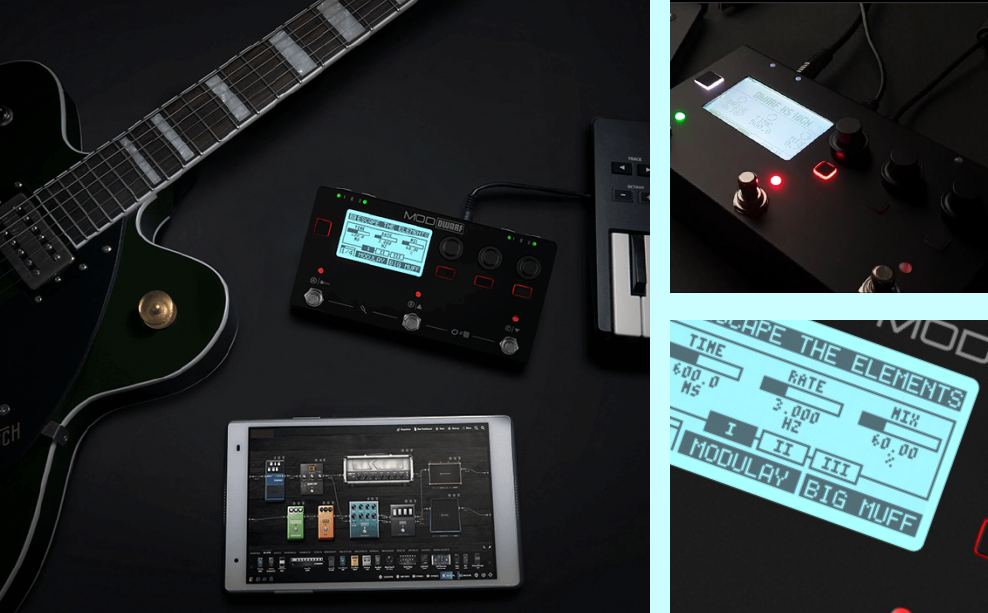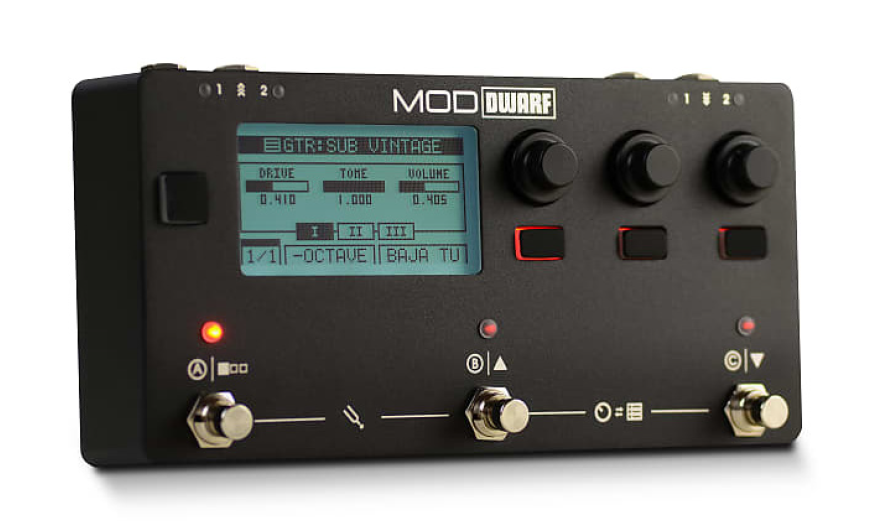The MOD Dwarf occupies a unique area when it comes to multi-effects processing. It combines software containing vast effects options and capabilities with portable and durable hardware, resulting in a tool with plenty of potential for use on stage and recording.
The unit is designed to comfortably fit on a pedalboard but, when connected to the browser-based web interface, you can create intricate effects chains from your computer that can be recalled on the Dwarf in an instant.
Effects-wise the Dwarf contains all that one could want, with many more effects available to purchase or download from MOD’s plugin store which is frequently updated.
Thanks to the new assignable control system, it’s also relatively easy to edit and save assigned parameters from the device itself meaning you can take it out and edit sounds without having to connect to a computer.
Most of the effects seem to be aimed at guitarists and are based on familiar stomp boxes. There are plenty of options for distortion, dynamic effects (such as compression and noise gates), filters, some great reverbs, delays, and lots of modulation effects.
There are also utility plugins which include a metronome, gain meters and A/B switches. You can get more plugins from the plugin store and if you’re into coding you can even write your own plugins and make them available online for other MOD users to download.
In terms of quality sounds, the Dwarf has some gems; many of the distortion plugins hit the mark regarding the original pedals they’re imitating. Reverbs and delays such as the Open AV Roomy and Shiro Modulay sound excellent and amp sims like the Veja Onyx are also convincing.
Using the MOD interface is relatively simple once you get your head round it, though I would highly recommend visiting the MOD Dwarf wiki page before trying to use this device.
To connect the Dwarf to your computer you can run a USB cable between them or connect via Wi-Fi which can be less responsive. If this doesn’t work automatically you can easily download a driver from the MOD website.
Creating pedalboards is quite intuitive; you simply drag the plugins at the bottom of the page and patch them together with one click. Each plugin has visible parameters from the pedalboard, but most have additional controls that are accessible by clicking on the Settings icon above each plugin.
The best way to switch between different sounds quickly is by creating ‘snapshots’ which are accessible in the top right corner of the screen.






